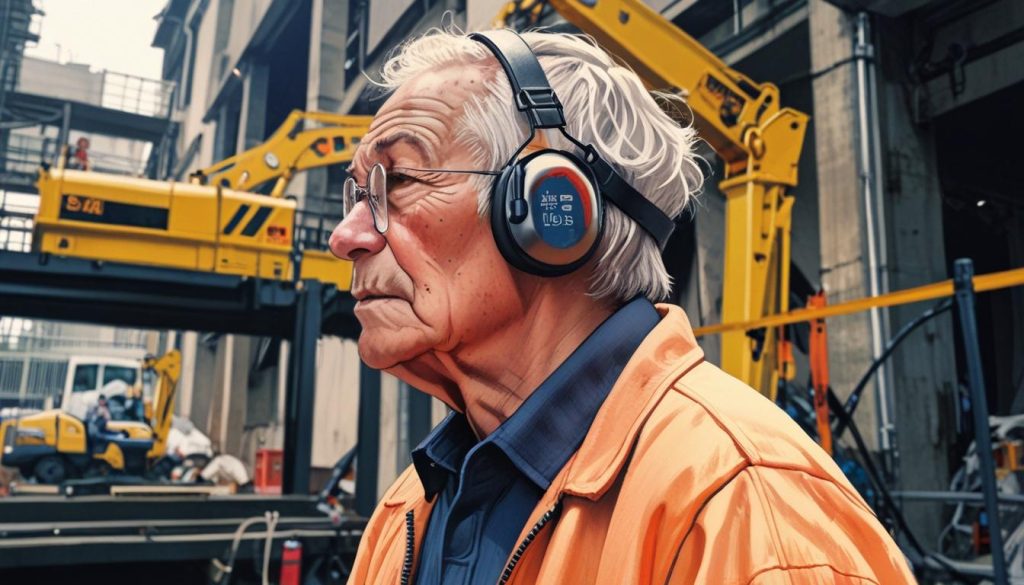As the years pass, many people experience a natural decline in their hearing ability, often exacerbated by factors that may lie beyond their control. However, experts suggest there are proactive measures individuals can take to mitigate this deterioration.
For a significant portion of the population, hearing loss begins with age, with approximately 55 percent of American adults experiencing disabling hearing impairments by the age of 75. According to Howard Francis, a professor of otolaryngology at Duke University School of Medicine, genetic predispositions play a role in about half of these cases. This gradual loss can be further aggravated by lifestyle choices, particularly exposure to loud environments, such as concerts or construction sites, where the noise levels can become hazardous. Research indicates that frequent exposure to sounds above 85 decibels, such as those produced by electric tools, can cause irreversible damage to the hair cells in the inner ear, which are crucial for translating sound into signals the brain understands.
Dunia Abdul-Aziz, a board-certified otolaryngologist at Harvard Medical School, emphasises the importance of being mindful of loud sounds. While environments like concerts are obvious risk factors, daily noises from fireworks, machinery, or even earbuds at high volume can accumulate and lead to significant hearing issues over time. The Occupational Safety and Health Administration (OSHA) warns that exposure to these sound levels can lead to progressive hearing loss, which often becomes more noticeable in later life.
On the preventive front, experts recommend simple steps to protect hearing. Among these, using earplugs in noisy settings is highlighted as a vital action for individuals who cannot avoid loud environments. Nandini Govil, a pediatric otolaryngologist, describes earplugs as the best means of safeguarding oneself against hearing damage. Additionally, keeping track of auditory health through regular hearing tests, especially starting at age 50, is recommended by the World Health Organization. Early detection through these assessments can lead to effective interventions and improve long-term outcomes.
However, amidst this guidance, pitfalls remain. Many individuals still resort to cotton swabs for ear maintenance, a practice that can lead to more harm than good. Howard Francis warns that cotton swabs can push earwax deeper into the canal, potentially leading to blockages or perforated eardrums. Instead, gentle wiping with a warm cloth outside the ear and the use of over-the-counter treatments can be more effective and safer methods for ear hygiene.
In the case of sudden changes in hearing, immediate action is crucial. Patricia Gaffney, president of the American Academy of Audiology, asserts that experiencing sudden hearing loss should be treated as a medical emergency. Prompt treatment, commonly involving steroids, is essential to prevent irreversible damage. Nonetheless, many individuals mistakenly delay seeking help, often dismissing initial symptoms in hopes they will resolve without intervention.
The dynamics of hearing loss are complex, with the World Health Organization projecting that by 2050, nearly 2.5 billion people will experience some form of hearing impairment, and 700 million will require rehabilitation. Factors contributing to this escalation include not just aging and genetics, but also loud noise exposure and ototoxic medications. Preventive strategies, therefore, must be multi-faceted, encompassing public health initiatives to promote safe listening practices, proper ear healthcare, and regular monitoring of auditory functions.
Increasingly, healthcare providers are looking towards innovative solutions to manage hearing loss, including the use of hearing aids. Recent studies reveal that for older adults facing cognitive decline, the use of hearing aids can significantly slow the progression of memory issues—a strong incentive not only to preserve hearing but also to enhance overall mental health and well-being.
In summary, while hearing loss is a common consequence of aging and external factors, understanding the risks, maintaining good ear health, and seeking timely intervention can collectively serve to protect one’s auditory capabilities for years to come.
📌 Reference Map:
- Paragraph 1 – [1], [3]
- Paragraph 2 – [1], [2], [4]
- Paragraph 3 – [2], [5], [6]
- Paragraph 4 – [1], [4]
- Paragraph 5 – [1], [2]
- Paragraph 6 – [7]
Source: Noah Wire Services





